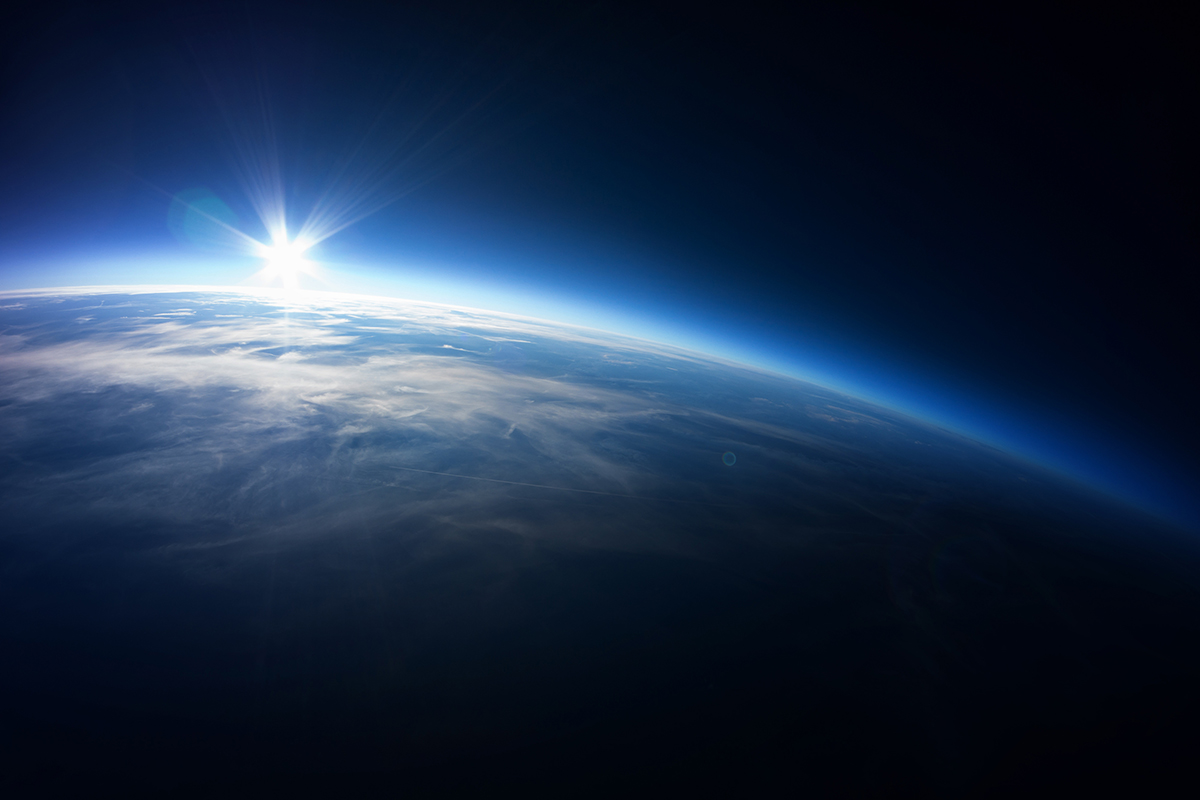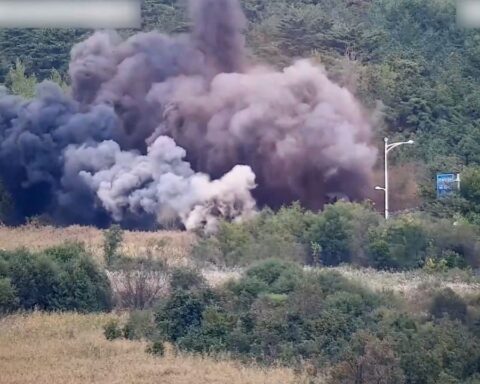A team of researchers deployed giant solar balloons at an altitude of 70,000 feet to record the sounds of Earth’s stratosphere, and their microphones picked up intriguing and unexpected noises.
The stratosphere, the Earth’s second atmospheric layer, houses the ozone layer, which absorbs and scatters ultraviolet radiation from the sun. This region, characterized by thin and dry air, experiences minimal turbulence and is the maximum altitude for jet aircraft and weather balloons.
Daniel Bowman, a principal scientist at Sandia National Laboratories, was inspired to explore the soundscape of the stratosphere during his graduate studies after being introduced to the low-frequency sounds generated by volcanoes, known as infrasound, which the human ear cannot hear.
Initially intending to attach infrasound recorders to balloons for recording volcano sounds, Bowman and his adviser, Jonathan Lees from the University of North Carolina, Chapel Hill, discovered that no one had attempted to attach microphones to stratospheric balloons in the last 50 years. This revelation led them to explore the potential of this new platform. Lees, an Earth, marine, and environmental sciences professor specializing in seismology and volcanology, joined the endeavour.
These solar balloons can ascend twice as high as commercial jets. According to Bowman, the team recorded various sounds during their balloon flights, including surface and buried explosions, thunder, colliding ocean waves, aircraft, city sounds, rocket launches, earthquakes, and possibly even trains and jet aircraft. Moreover, they also captured sounds of unknown origin.
Presenting their findings at the 184th Meeting of the Acoustical Society of America in Chicago, the team shared a recording from a NASA balloon circling Antarctica. The recording contained infrasound signals of ocean waves colliding, resembling a continuous sigh. However, it also contained crackles and rustling, whose source remains unidentified.
Bowman and his collaborators conducted research using NASA balloons and other flight providers and took the initiative to build their balloons, each measuring approximately 19.7 to 23 feet in diameter. These cost-effective balloons can be assembled using readily available supplies from hardware and pyrotechnic stores, taking around 3.5 hours for a team of two to complete.
The balloons are constructed using painter’s plastic, shipping tape, and charcoal dust, with the charcoal dust darkening the balloons. When exposed to sunlight, the darkened balloons absorb heat and become buoyant. This simple do-it-yourself design enables the researchers to release multiple balloons for extensive data collection. Bowman emphasized that even high school students with access to their gymnasium could construct solar balloons, aided by a cellphone app called RedVox for recording infrasound.
Between 2016 and April of the current year, Bowman estimated that he launched several dozen solar balloons for capturing infrasound recordings. The balloons carried micro barometers, initially designed for volcano monitoring, to record low-frequency sounds. GPS tracking was used to locate the balloons as they could travel hundreds of miles and land in problematic areas.
The team encountered challenges due to the harsh environment of the stratosphere, which experiences extreme temperature fluctuations. Bowman mentioned that solar balloons could be sluggish, and they had accidentally damaged a few while attempting to launch them. Sometimes, retrieving the payloads required traversing canyons and mountains. In one instance, a balloon launched itself back into the air after landing overnight in a field, allowing it to fly for another day.
The advantage of reaching high altitudes with balloons is that noise levels are reduced, expanding the detection range. Furthermore, these balloons provide access to the entire Earth. However, researchers face deciphering the signals recorded during the flights. According to Bowman, numerous flights captured signals whose origins remain unknown. While they are likely to be ordinary occurrences like patches of turbulence, distant severe storms, or even human-made objects such as freight trains, the lack of data makes it challenging to determine precisely what is happening.
Sarah Albert, a geophysicist at Sandia National Laboratories, has also researched a phenomenon known as the “sound channel” located at the altitudes studied by Bowman. Her recordings have captured unidentified rumblings and rocket launches. Bowman speculates that sound might get trapped in this channel, bouncing around until it becomes garbled. However, the distinction between near and quiet events like turbulence and faraway, loud phenomena like storms still needs to be clarified.
Bowman and Albert plan to further investigate the aerial sound channel and strive to identify the sources of the mysterious rumblings in the stratosphere. They are particularly interested in understanding the variability of the stratospheric soundscape across different seasons and locations.
The implications of this research extend beyond Earth’s stratosphere. Bowman envisions that helium-filled versions of these balloons could be employed in exploring other planets like Venus. By carrying scientific instruments above or within the clouds of other celestial bodies, these balloons could conduct test flights for larger, more intricate missions.
Understanding the soundscape of the stratosphere and unravelling its enigmatic noises is a fascinating endeavour that could provide valuable insights into Earth’s atmosphere and potentially shape future space exploration endeavours. With each balloon launch and recording, Bowman and his team inch closer to unlocking the secrets hidden within the upper reaches of our planet’s atmosphere.







